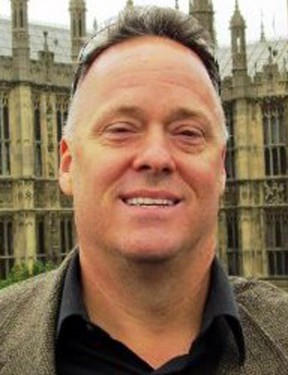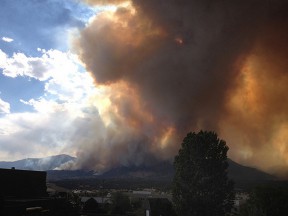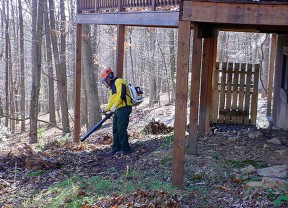 The pictures are poignant: House after house destroyed by a wildland fire. We look at these pictures and wonder if anything could have been done to better protect these homes.
The pictures are poignant: House after house destroyed by a wildland fire. We look at these pictures and wonder if anything could have been done to better protect these homes.
Sometimes wildfires are unpredictable. But there are measures homeowners can take that will help lessen the chances a fire will consume their property.
“People who live in a wildland-urban interface often forget or disregard the wildland fire cycles and dangers,” said Tom Harbour, Fire and Aviation Management director. “We need homeowners to understand that they can make a difference by making their homes defensible from wildfire.”
The U.S. Forest Service partners with the National Fire Protection Association on Firewise Communities, a program that teaches people how to adapt to living with wildfire and encourages neighbors to work together and take action now to prevent losses.
Equally impactful as seeing scores of homes lost to wildfires are those photos showing flames of a fast-moving fire passing over or halting to an invisible line. Sometimes that invisible line is the product of a homeowner intentionally designing landscaping that is based on Firewise practices.

A large plume of smoke rises over Colorado Springs, Colo., that cast a wide, dark shadow over homes and businesses. Wildland fires burn intensely and creating a defensible space around your home can be the difference between a close call and complete destruction. (Adam Drake/Inciweb.org)
Fire Adapted Communities, a coalition that includes the Forest Service and Firewise, released a case study about the Waldo Canyon Fire that began on Pike National Forest and spread to nearby Colorado Springs, Colo. Last year, this wind-whipped fire caused the death of two people and destroyed 346 homes in a community where more than 35,000 homes are within the wildland-urban interface.
At the time Waldo Canyon was considered the worst fire in Colorado’s history, but it could have been even worse. While devastating, several years of community education, projects and planning are credited with helping to save 81 percent of the homes in the three neighborhoods threatened by the fire – made worse by extremely dry conditions and high winds. It was, one fire official said, an urban inferno.
Today, Colorado Springs-area firefighters and residents are in the midst of the Black Forest Fire, now called the most destructive fire in Colorado history. To date, the fire has consumed more than 14,000 acres, destroyed more than 480 homes, damaged more than 15 and killed two people. As of Monday, the fire was 75 percent contained and is believed to be human caused.
Matt Cyrus knows the personal and professional benefits of taking precautionary measures to protect a home before a fire. Ironically, Cyrus, a captain with the Cloverdale (Oregon) Fire Protection District, was the first responder on the scene of a fire on his property. But he felt he had less to worry about because he had prepared for many years to defend his property against fire. The fire burned as expected but did not harm his home.

Don’t forget to clean anything stored underneath decks and porches and remove vegetation as a precaution against wildland fires. Leaves, twigs and other debris act as fuels that feed a blaze. Keep leaves and needles off of your roof and deck and make a fuel-free area within 3-5 feet of your home’s perimeter. (Photo used by permission from the National Fire Protection Association Firewise Communities Program)
So how did he do it?
Look closely at a firewise property such as Cyrus’ and you will see a common theme: defensible space stretching at least 100 feet from a structure and in some cases a couple of hundred feet. These firewise yards are surrounded by grass, rock or evergreen ground cover, and in some instances even dirt. This “empty space” creates an area of land where the high intensity heat has nothing to burn, compared to a home surrounded by trees, bushes, sheds and other combustible items.
Although the Forest Service and other federal, state and local crews work hard to protect residents, property, infrastructure and natural resources from wildfire, homeowners ultimately have a responsibility to their own property.
You and your community can prepare for wildfire to help not only yourself and your family, but also the firefighters who put their lives in harm’s way to fight wildfires.
Robert Westover is a public affairs specialist with the U.S. Forest Service in Washington, D.C.
The First Step to Avoiding Disastrous Wildfires